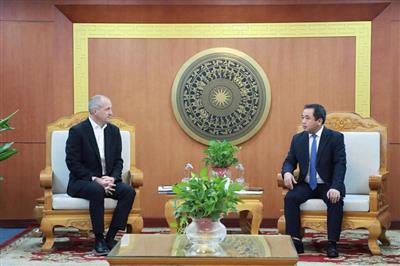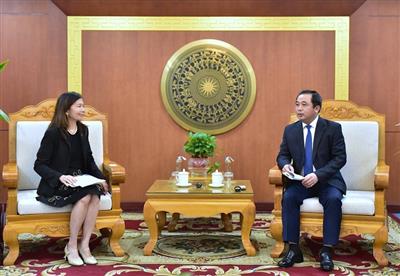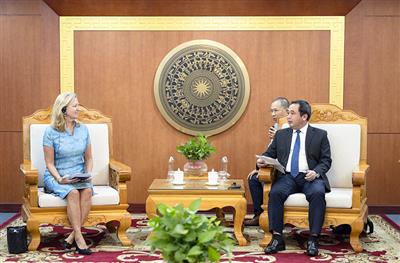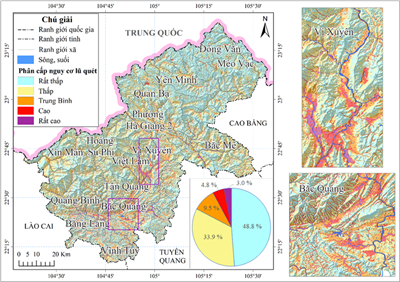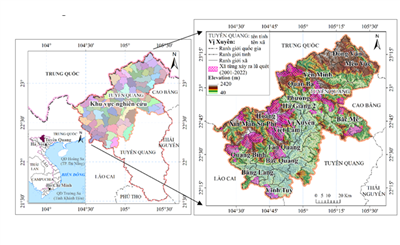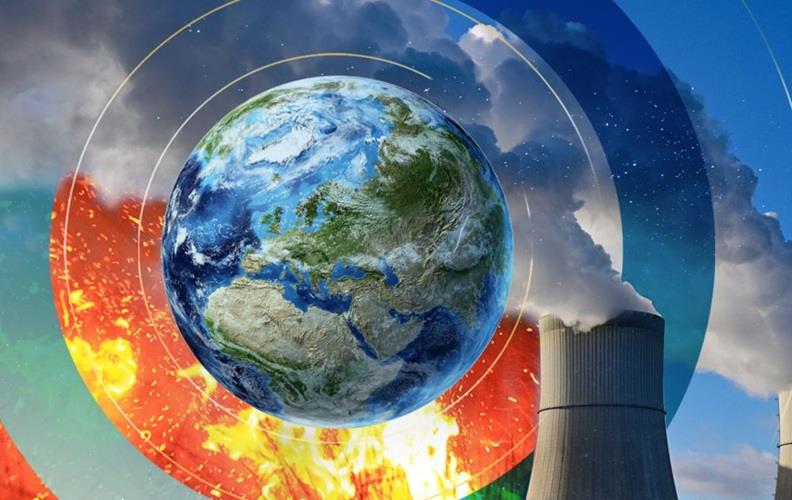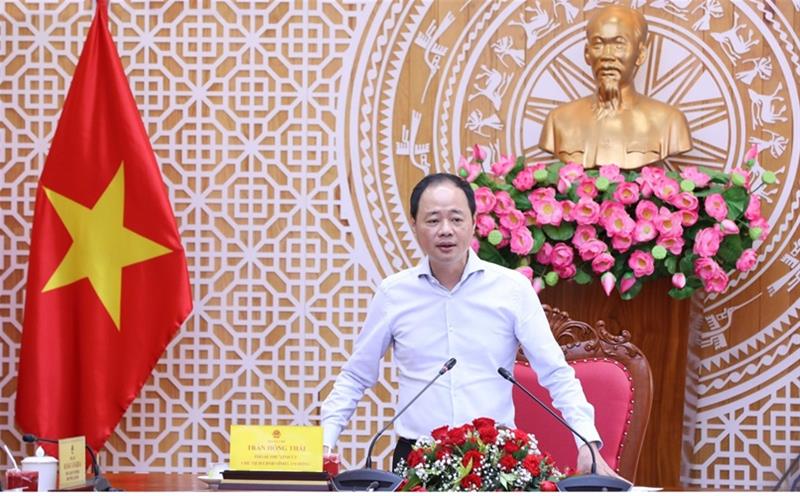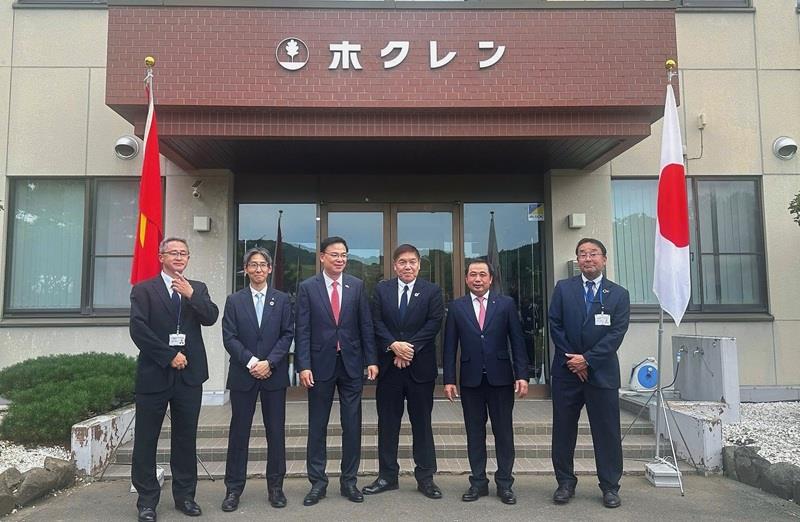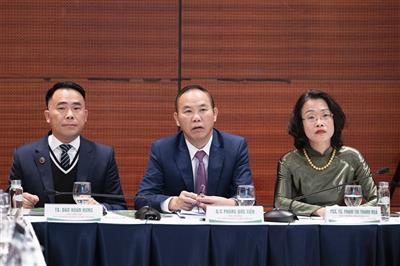
Shaping a sustainable future for Vietnam’s rice sector
20/05/2025TN&MTOn May 19 in Hanoi, the international workshop “Assessing the role and potential of low-emission rice production systems in Vietnam” marked a significant milestone in the country’s efforts to promote sustainable rice production that aligns with climate adaptation and national emission reduction commitments. The event gathered leading experts, government officials, businesses, cooperatives, and development partners to foster multi-stakeholder collaboration and share solutions for a greener, more efficient rice industry.
From urgency to opportunity: The case for low-emission rice production
Vietnam is stepping up its efforts to tackle greenhouse gas emissions in agriculture, with sustainable, low-emission rice production emerging as a strategic priority. In his opening remarks at the workshop, Dr. Tran Cong Thang, Director general of the Institute of Strategy and Policy on Agriculture and Environment (ISPAE), underscored the country’s commitment to transforming its rice sector through climate-smart solutions. He cited major initiatives such as the Vietnam sustainable agriculture transformation (VnSAT) project and the national plan to cultivate one million hectares of high-quality, low-emission rice in the Mekong Delta by 2030. These programs, he emphasized, are essential pillars of Vietnam’s broader climate change mitigation strategy.
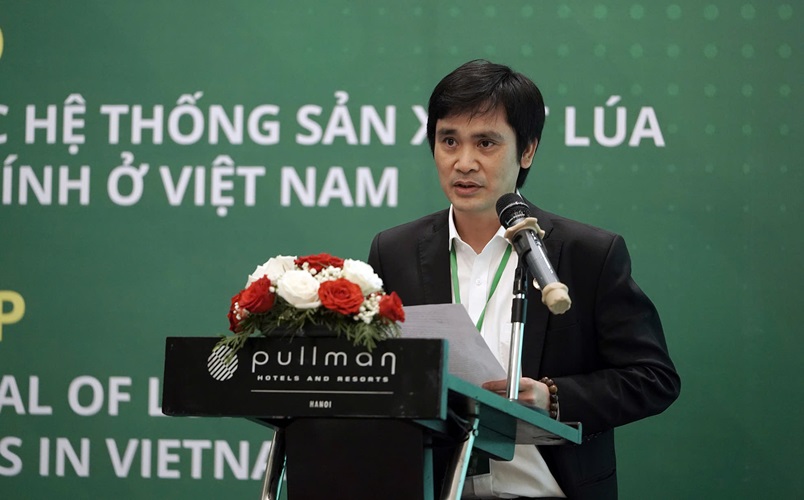
Given the sector’s vital role in national agriculture and global food security, Dr. Tran Cong Thang emphasized that embracing creative and forward-looking solutions is essential for sustainable transformation
The urgency is clear. As one of the world’s leading rice exporters, Vietnam faces mounting challenges from climate change, which threatens both agricultural productivity and global food security. According to the World Bank, rice cultivation is responsible for 48% of Vietnam’s agricultural greenhouse gas emissions and more than 75% of its methane (CH₄) output. Confronting this challenge demands a fundamental shift toward environmentally sustainable production systems—an imperative not only for achieving Vietnam’s nationally determined contributions (NDCs) but also for reinforcing the country’s leadership in global climate action.
Workshop participants agreed that Vietnam is well-positioned to lead this transition. Dr. Jongsoo Shin, Regional director for Asia at the International Rice Research Institute (IRRI), highlighted Vietnam’s potential to drive innovation in low-emission rice farming. He noted that these strategies can generate dual benefits by reducing emissions while also strengthening climate resilience and improving farmers’ livelihoods.
Echoing this perspective, Dr. Tran Cong Thang further emphasized that innovation is the key to unlocking a more sustainable future for Vietnam’s rice sector. Given the industry’s central role in national food security and rural development, he called for bold, forward-looking approaches to overcome existing challenges and seize emerging opportunities.
Vietnam has already made measurable progress. The VnSAT Project has promoted low-emission practices across more than 180,000 hectares, while the government's one-million-hectare initiative is designed to enhance both environmental sustainability and economic competitiveness. These efforts are paving the way for a greener rice value chain that aligns with global market trends.
Importantly, the shift to low-emission rice is not only an environmental imperative but also a significant economic opportunity. With growing global demand for climate-responsible products, Vietnam’s green rice is poised to gain greater access to high-value markets such as the European Union, Japan, and the United States—boosting the nation’s agricultural exports and reinforcing its reputation as a sustainable food producer.
Policy and institutional coordination: The cornerstones of green transformation
A key highlight of the workshop was the launch of the project “Strengthening coordinated action to implement Vietnam’s NDC in rice production systems,” led by IRRI with support from GIZ and collaboration with the Institute of Strategy and Policy on Agriculture and Environment (ISPAE). The project aims to develop effective policies, enhance institutional capacity, and improve coordination among stakeholders to accelerate the adoption of low-emission rice systems.
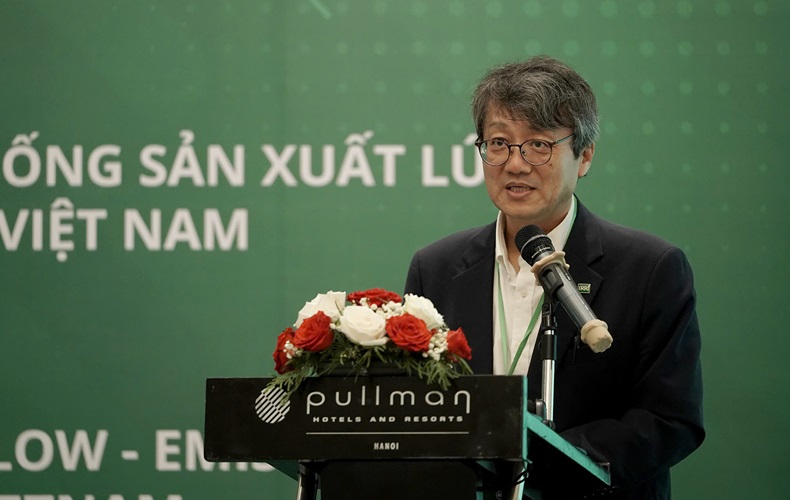
Dr. Jongsoo Shin, IRRI Regional Director for Asia, emphasized Vietnam’s potential to lead low-emission rice farming, bringing both climate and livelihood benefits
Dr. Alisher Mirzabaev from IRRI stressed that nationwide scaling requires robust partnerships between the public and private sectors. Developing public-private partnership models will help reduce technology adoption costs and encourage widespread use of advanced farming techniques. His research indicates that green investments offer both long-term sustainability and immediate economic benefits.
Mr. Le Trong Hai (ISPAE) presented survey findings revealing farmers’ readiness and capacity to adopt sustainable practices across five key provinces. These data provide a scientific basis for designing region-specific support policies that ensure the feasibility and effectiveness of large-scale implementation.
Discussions chaired by Dr. Tran Minh Hai, Vice-rector of the School of Public policy and Rural development, identified barriers to adoption such as high initial costs, lack of technical knowledge, and value chain limitations. Proposed solutions include enhanced training, green finance support, and market expansion for low-emission rice.
Following the workshop, organizers plan to advance research and broaden collaborative networks, aiming to convert policy frameworks and pilot projects into actionable, real-world solutions. These initiatives will contribute to the broader modernization and greening of Vietnam’s agriculture.
The green grain: A pathway for Vietnam’s agricultural future
The May 19 workshop was not just an academic gathering but a strategic declaration of Vietnam’s commitment to building a low-emission, sustainable, and responsible agricultural sector. Facing mounting pressures on global food security, Vietnam is redefining its rice value chain by integrating environmental, economic, and social dimensions into production.
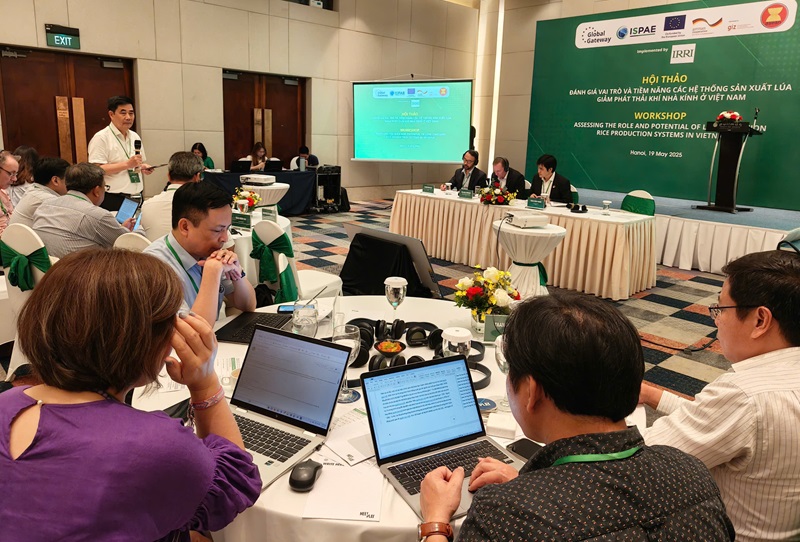
The event gathered leading experts, government officials, businesses, cooperatives, and development partners to foster multi-stakeholder collaboration and share solutions for a greener, more efficient rice industry
Successful programs such as the One million hectares of high-quality rice plan and international collaborations like IRRI–GIZ–ISPAE demonstrate Vietnam’s readiness and capacity for transformation. However, realizing large-scale, lasting impact will require concerted efforts from government, industry, researchers, and farmers—the primary stakeholders.
Low-emission rice production is more than a trend; it is a critical pathway for Vietnam’s deeper integration into global agri-food value chains and a tangible contribution to the country’s green development goals. From today’s green grain grows the promise of a sustainable agricultural future for Vietnam.
The workshop, “Assessing the role and potential of low-emission rice production systems in Vietnam”, served as the kick-off event for the project “Strengthening coordinated action to implement Vietnam’s NDC in rice production systems,” implemented by the International Rice Research Institute (IRRI) with financial support from the German Agency for International Cooperation (GIZ), in collaboration with the Institute of Strategy and Policy on Agriculture and Environment (ISPAE).
Ngoc Huyen


